Higher classification Polystichum | Division Pteridophyta Rank Species | |
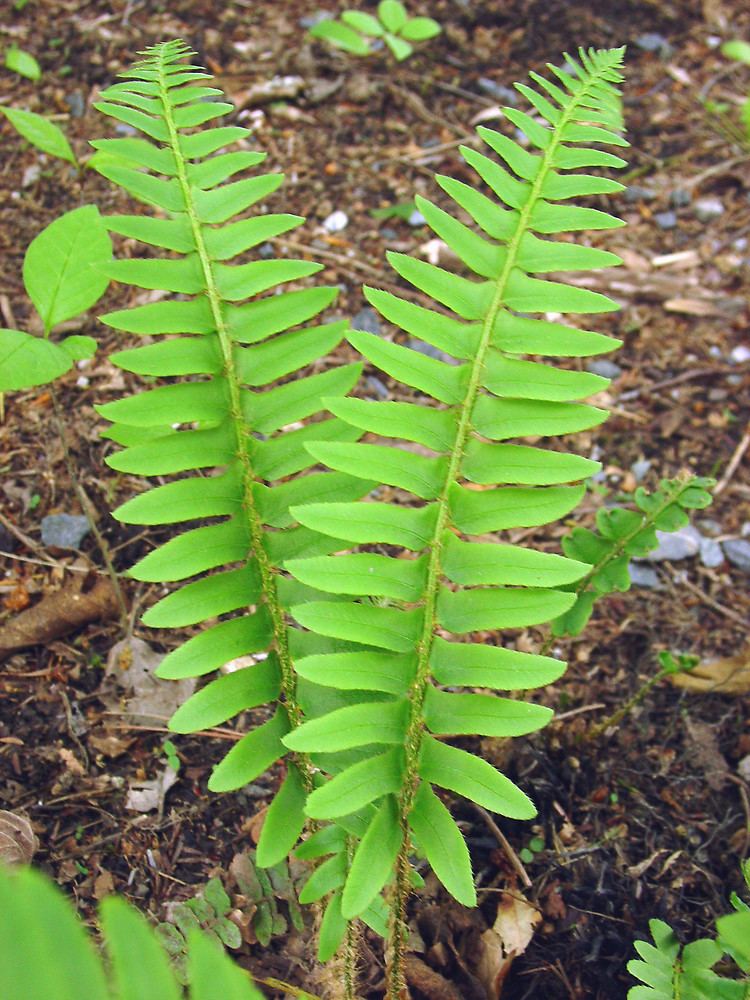 | ||
Scientific name Polystichum acrostichoides Similar Polystichum, Cinnamon Fern, Onoclea sensibilis, Dryopteris marginalis, Athyrium filix‑femina | ||
Polystichum acrostichoides, commonly called Christmas fern, is a perennial, evergreen fern native to eastern North America, from Nova Scotia west to Minnesota and south to Florida and eastern Texas and naturalized in Europe. It is one of the most common ferns in eastern North America, being found within moist and shady areas in forests, rocky slopes, and stream banks. The common name of Christmas fern, derives from its evergreen fronds which are often still green at Christmas in December.
Contents
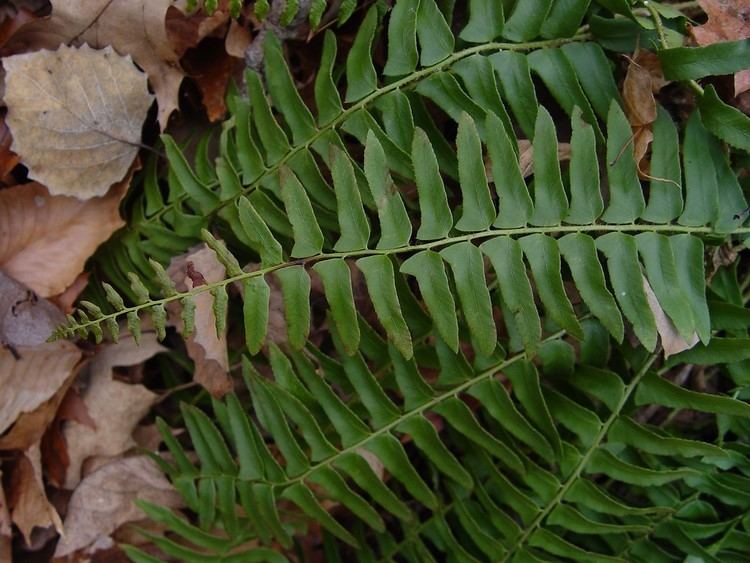
Description
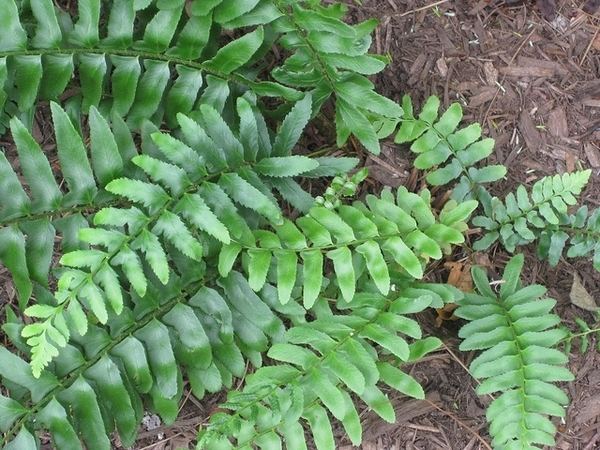
Christmas fern grows in a circular form with all the leaves arising from a single point on the ground. It can form colonies but frequently grows singly or in twos or threes. In the winter the fertile leaves (leaves bearing spores) die and the sterile leaves will remain through the winter but are often laid down by snow or frost. The frond is supported by a stipe, or stem, which is typically 1/4 or 1/3 the length of the total leaf. The stipe length is given as a ratio because the leaf size can vary quite considerably and it's more accurate to not give an exact number but rather to estimate the length based on each leaf's size. The stipe is black to very dark brown at the base and fades to green as it continues toward the tip. It is also covered in coarse light brown to tan scales which are typically about 5 mm long and translucent, the stipe itself is grooved on the upward side. As the stem continues toward the tip of the leaf the size and density of the scales decreases. The young fiddleheads, also known as crosiers, are a scaly grey and prominent in early spring.

The fronds grow from 30-80 cm long and 5-12 cm broad, divided into 20-35 pairs of leaflets or pinnae. Each pinnae is typically 4 cm long and has a finely serrulate or spiny edge and is oblong to falcate in shape. The fine teeth or spines on edge of the leaf point toward the tip of the leaflet. Each pinnae has a triangular lobe at its base which points toward the distal end (tip) of the leaf; this protrusion is approximately 5 mm wide and equally tall and its tip bears a small spine.The lowest two leaflets are typically downward pointing and opposite to each other. The leaves are overall a dark green and rather leathery and thick in texture, their undersides may be covered in very sparse hairs; their shape can be described as linear to lanceolate shaped. The light brown spores are produced on pinnae which are conspicuously smaller than the pinnae below them; these pinnae are located at the tip of the frond.—these pinnae can be described as acrostichoid as the sporangia covers almost the entirety of the underside of the leaf surface. Acrostichoid is also the term from which P. acrostichoides derives its species name.
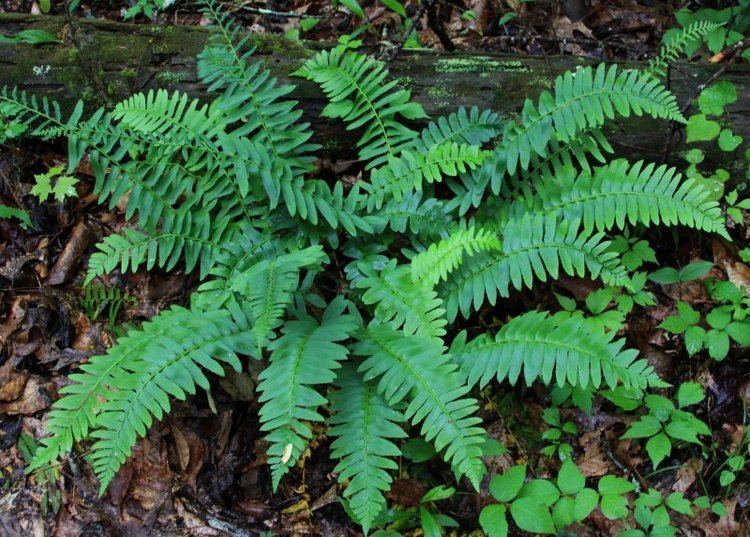
Christmas fern resembles the Pacific Coast sword fern, Polystichum munitum, but does not make the huge clumps which that fern forms, and it differs from it and almost all other ferns in that fertile (spore bearing) leaflets of the Christmas fern are noticeably smaller than the sterile leaflets and located on the same leaf. The fertile leaflets are identified by being covered by a typically brown covered mass and are located at the tip of the leaf. Like other ferns of the genus Polystichum, it is allied to the wood ferns, genus Dryopteris, to which it is often found growing in close proximity.
P. acrostichoides is known to hybridize with Polystichum braunii in areas where their ranges overlap.
Cultivation
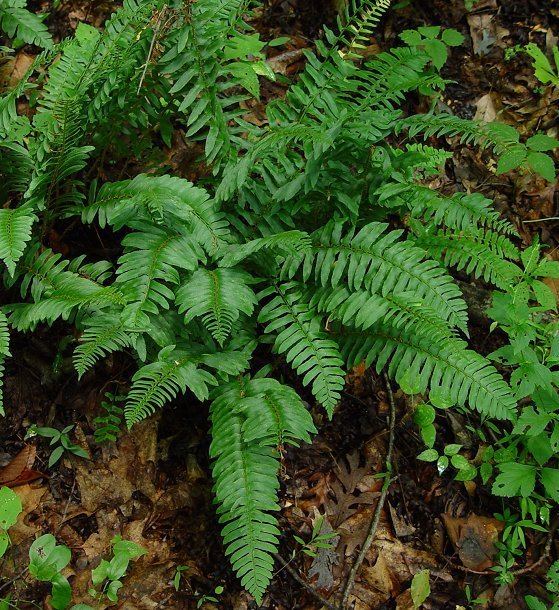
The Christmas fern, is popular in cultivation as an ornamental plant for gardens and natural landscaping, because it is easy to grow and can be used in many settings and soils. Because it's evergreen, Christmas fern is often used in winter gardens as well.
It has been noted that this fern can serve a soil conservation and erosion control function on steep slopes. The fronds are semi-erect until the first hard frost, after which they recline to be flat on the ground, effectively holding in place fallen leaves so that they become soil on the slope.
